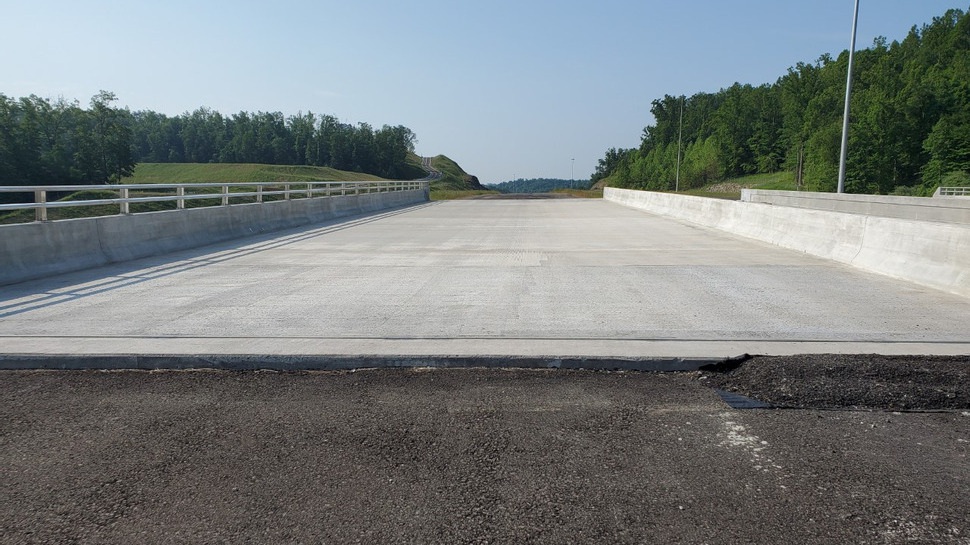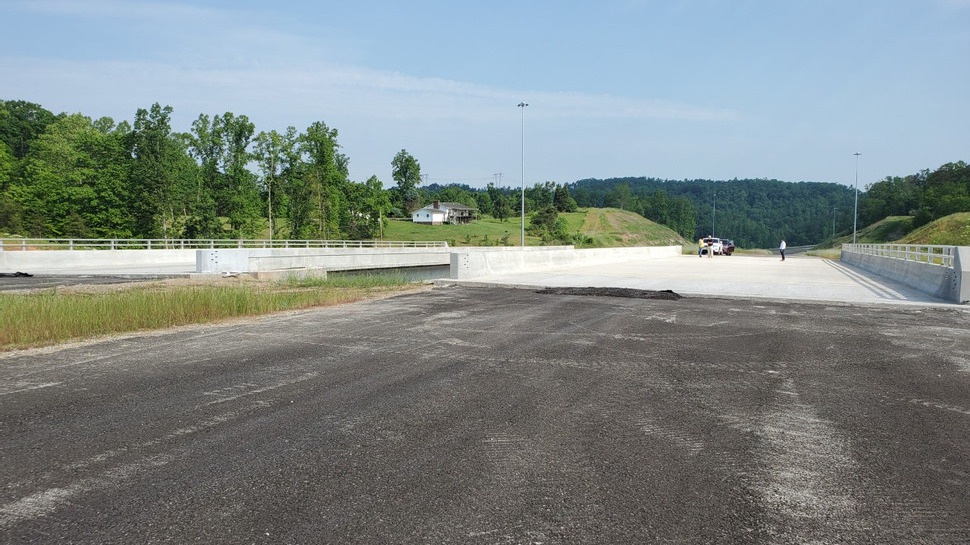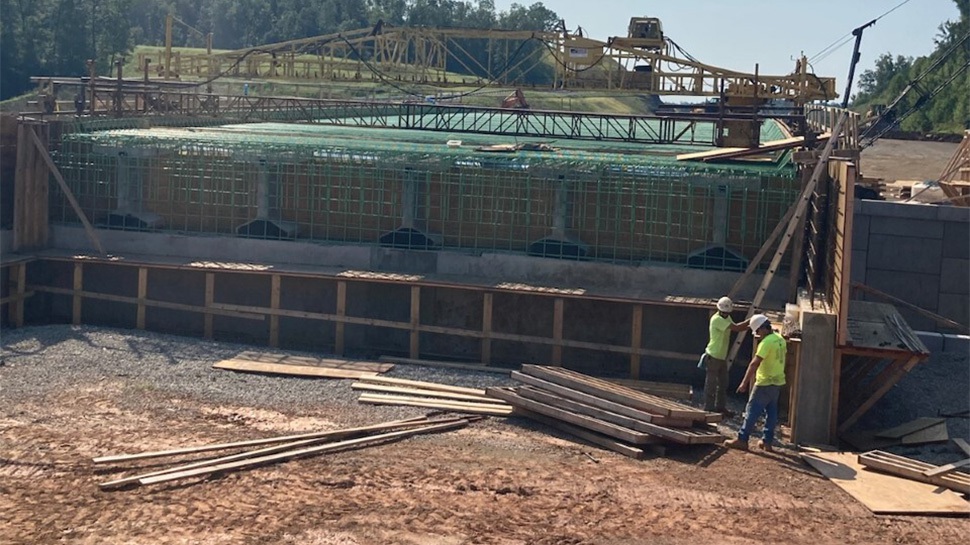
West Virginia's success with ASTM C845 expansive cement delivers unanimous approval for use.
There's no better way to understand a bridge deck's performance than placing side-by-side bridges to evaluate in service.
That’s what the Department of Transportation (DOT) Division of Highways (DOH) did in the final phase of West Virginia’s largest-ever improvement program. Conceived to stimulate economic growth by expanding access into and throughout the state, “Drive Forward WV” is investing $3 billion on 700 projects to build, widen, and repair roads and bridges.
Depending on who you ask — the governor, a think tank, or the American Society of Civil Engineers — West Virginia’s roads rank 16th or 30th nationwide and earn a D+ grade, respectively. While “Drive Forward WV" is pushing the needle upward, as of January 2022 more than half — 55% — of major roads were in poor or mediocre condition and 20% of bridges were in poor or structurally deficient condition.
Compared to places like the upper Midwest and New England, West Virginia’s winters are relatively mild. The state is almost entirely mountainous with an average annual snowfall of 3 feet (0.9 meters). Temperatures range from 15° F to 87° F (-9 C to 30.6° C). That means pavement engineers need concrete mixes that resist the destruction caused by freeze-thaw cycles as well as the caustic snow-and-ice-control chemicals used to maintain safe driving conditions on winding, high-elevation roads.
One such mix is Type K shrinkage-compensating concrete (ACI 223) made with Komponent® cement additive.
This expansive cement is engineered to create sufficient designed expansion to compensate for negative volume change, which is the primary cause of drying shrinkage cracking — and a universal problem for virtually all state DOTs. Komponent contains no tricalcium aluminate (C3A), the compound that makes portland cement concrete vulnerable to sulfate attack. When used in any portland or portland-limestone cement concrete design, Komponent replaces a percentage of the cement and lowers the C3A content of the mix, improving overall sulfate resistance.
Improved sulfate resistance and long-term dimensional stability are the primary reasons Pennsylvania, Virginia, the Illinois Tollway, and more have approved Type K shrinkage-compensating concrete to be used for bridge decks. In addition, Komponent adds cementitious properties, with strengths typically 10% to 15% higher than a traditional mix.
Type K concrete consists of blending Komponent with local portland cement at an engineered dosage to create Type K Cement (ASTM C845). Dosage is tailored to the specific raw materials to be used for the project using ASTM C878 to ensure sufficient expansion that compensates for the shrinkage characteristics of the mix (i.e., designed expansion). Like fly ash, silica fume, slag cement, and other supplementary cementitious materials (SCMs), Komponent is introduced using standard batching and mixing means and methods at the batch plant.

TEAMWORK BY DAY — AND NIGHT
West Virginia was particularly interested in learning how Type K concrete thwarts early-age cracking in newly constructed bridge decks. The Buffalo Bridge presented the ideal opportunity to test the shrinkage-cracking propensity of the state’s preferred bridge deck mix, a Class H-Type 1 ASTM C150 concrete made with ground-granulated blast-furnace slag (GGBFS), and compare it to a Class H-Type K ASTM C845 concrete made with GGBFS. No waterproofing membrane was used for either placement.
Built in fall 2020 near a new interchange, each bridge is 122 feet long with two lanes. The reinforced slabs are 8-1/4 inch (2.54 cm) thick. CTS Senior Consulting Engineer Ed Russell and Komponent Director Susan Foster helped the state’s Cement and Concrete Group write a Type K concrete performance specification that could be used for bidding.
The contract was awarded to Cardinal Concrete and ORDERS Construction. Russell and a CTS field service representative met with the companies’ teams at the jobsite for a pre-pour meeting to share best practices.
The pre-construction meeting and training was followed by an 8-cubic-yard (6.1-cubic-meter) trial placement at the concrete plant, which was completed using standard means and methods. Due to the consistent cohesiveness of a Type K concrete mix, pumping was accomplished easily.
Due to the project’s small volume of 205 cubic yards (156.7 cubic meters), a cement auger was used to introduce the 50-pound (22.7-kilogram) bags into the mixer.
Like most DOTs, West Virginia requires QC testing of each load. At the jobsite, each of the 18 loads was tested to ensure it met the state’s air and slump requirements. CTS Regional Sales & Service Engineer Tracy Johnston was on-site to answer WVDOH Materials Engineer Suman Thapa’s questions.
ORDERS Construction's superintendent was pleased with Type K’s ease of pumpability, workability, and finishability using the same equipment, means, and methods used on the comparative bridge.

THE RESULTS
Three weeks after placement, the deck using the state’s Class H-Type 1 bridge mix exhibited 11 transverse cracks, which were attributed to drying shrinkage, as well as two diagonal and one longitudinal crack. Five weeks after placement, the Type K deck exhibited no transverse or longitudinal cracks. The state concluded that Class H-Type K shrinkage-compensating concrete effectively counteracted drying shrinkage and early-age cracking more effectively than the Class H-Type 1 mix.
In August 2024, Type K shrinkage-compensating concrete made with Komponent was formally approved for use in West Virginia and incorporated into the state's bridge deck specification.
“Same supplier and same contractor for both decks, and the portland deck developed transverse cracks every 8 feet to 10 feet (2.4 meters to 3 meters),” says Johnston. “Komponent was developed 60 years ago with proven performance in bridge decks and pavements. States just have to try it. It’s a learning curve, but we’re here to help you all the way through it.”